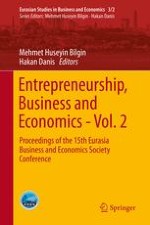2016 | OriginalPaper | Buchkapitel
Macroeconomic Impacts of Electricity Generation on Croatian Real GDP: Causality Analysis
verfasst von : Pavle Jakovac, Nela Vlahinic Lenz, Sasa Zikovic
Erschienen in: Entrepreneurship, Business and Economics - Vol. 2
Aktivieren Sie unsere intelligente Suche, um passende Fachinhalte oder Patente zu finden.
Wählen Sie Textabschnitte aus um mit Künstlicher Intelligenz passenden Patente zu finden. powered by
Markieren Sie Textabschnitte, um KI-gestützt weitere passende Inhalte zu finden. powered by
